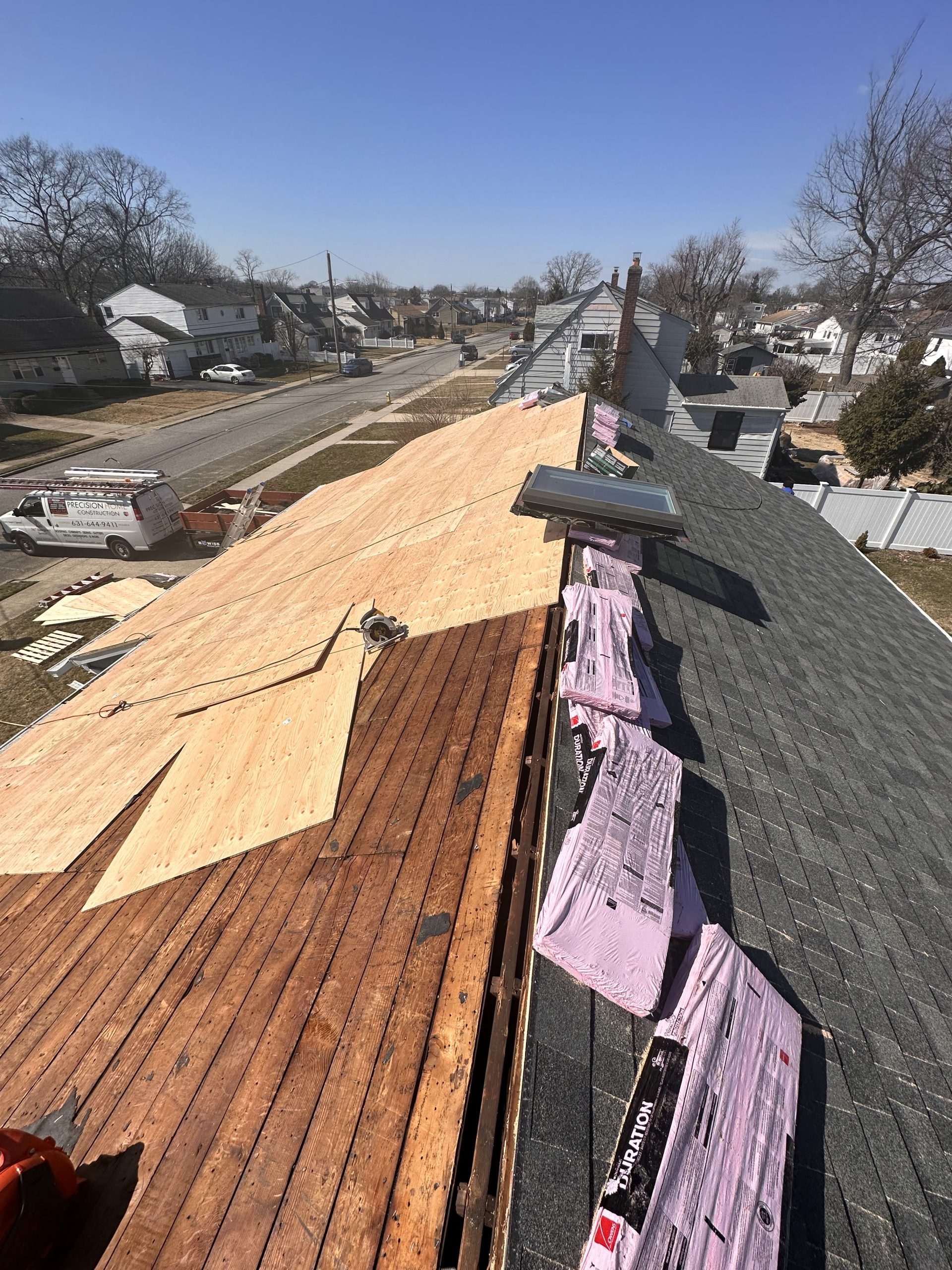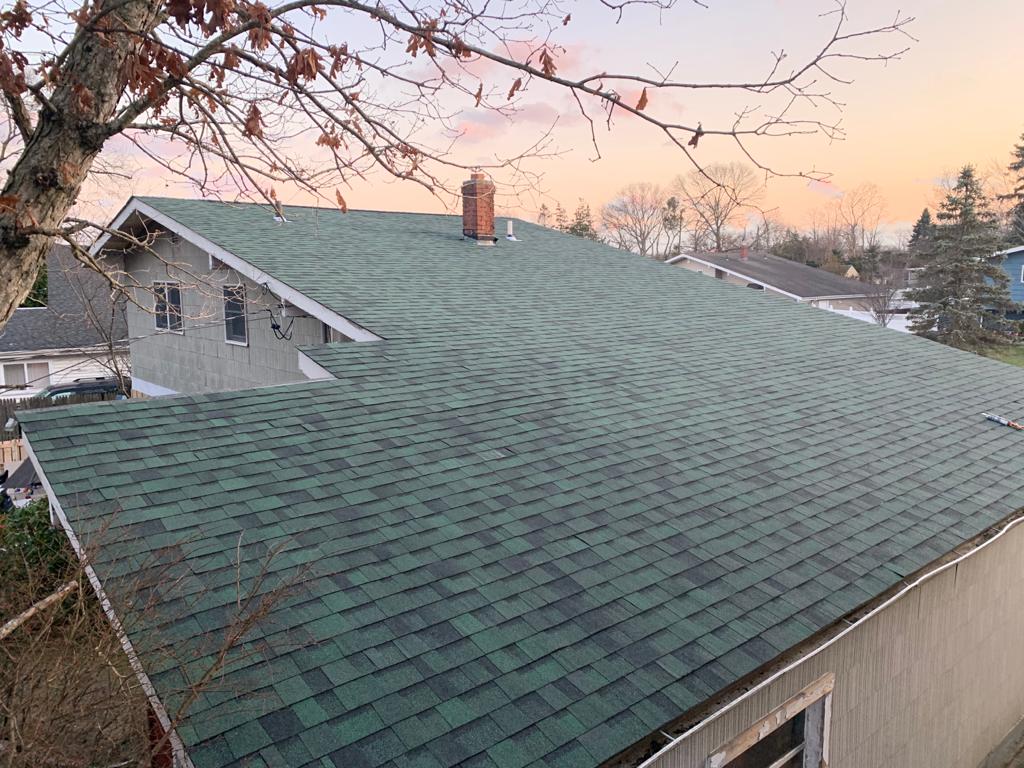A leaking roof is a homeowner’s nightmare that can lead to significant damage if not addressed promptly. Whether it’s a small drip or a major stream of water, taking immediate action is crucial to prevent further harm to your home. In this guide, we’ll explore the steps you need to take if your roof starts leaking.
- Identify the Source of the Leak: The first step is to determine where the leak is coming from. Look for water stains on the ceiling, walls, or attic. Trace the water path and try to locate the source of the leak. Inspect the attic for signs of water penetration, and check the roof for missing or damaged shingles.
- Temporary Measures: If the leak is severe, use temporary measures to minimize damage until professional help arrives. Place buckets or containers under the leak to collect water and prevent it from spreading. Use towels or rags to soak up excess water and avoid further saturation of the affected area.
- Clear the Surrounding Area: Move furniture, electronics, and other valuables away from the leaking area to prevent additional damage. Protect your belongings from water exposure, as prolonged exposure can lead to irreparable harm.
- Ceiling Repairs: If the leak has caused damage to your ceiling, address it promptly. Cut a small hole in the ceiling to release trapped water and alleviate pressure. This can help prevent the ceiling from collapsing. Remember to place a bucket beneath the hole to catch any remaining water.
- Contain the Spread: Use towels or buckets strategically to prevent water from spreading to other parts of your home. Containing the spread of water can minimize damage and make the cleanup process more manageable.
- Professional Roof Inspection: Once you’ve taken immediate measures, it’s essential to call in a professional roofer for a thorough inspection. Roof leaks can be caused by various issues such as damaged shingles, clogged gutters, or flashing problems. A roofing professional will identify the root cause and recommend the appropriate repairs.
- Temporary Roof Repairs: If the leak is due to a specific issue, such as a missing or damaged shingle, consider making temporary repairs until a professional can assess and address the problem. Use roofing cement or a tarp to cover the affected area and prevent further water intrusion.
- Regular Roof Maintenance: To prevent future leaks, invest in regular roof maintenance. Schedule annual inspections, clean gutters regularly, and address any minor issues promptly. Proactive maintenance can extend the lifespan of your roof and save you from costly repairs.
- Insurance Claims: If the leak has caused significant damage, contact your homeowner’s insurance provider to file a claim. Document the damage with photos and keep records of any repairs or expenses incurred.
- DIY vs. Professional Repairs: While you may be tempted to address the issue on your own, it’s important to gauge the severity of the leak and your skill level. Minor issues like a missing shingle may be suitable for DIY repairs, but major leaks or extensive damage should be left to professional roofers. They have the expertise, tools, and experience to handle complex roof issues safely and effectively.
- Evaluate Your Roofing Material: The type of roofing material on your home can impact how you approach repairs. For example, asphalt shingles, metal roofing, and tile roofs may require different repair methods. Familiarize yourself with the specific requirements of your roofing material or consult with a professional to ensure that repairs are done correctly.
- Prevent Mold and Mildew: Water leaks can create an environment conducive to mold and mildew growth. After addressing the leak, thoroughly dry the affected area to prevent the development of these harmful substances. Use fans, dehumidifiers, and proper ventilation to ensure that the area is completely dry.
- Monitor Interior Damage: Even after the leak has been repaired, keep an eye on the previously affected areas for signs of ongoing issues. Water damage can sometimes be insidious, with long-term consequences such as rot or weakened structural components. Regularly inspect the repaired area to catch any potential problems early on.
- Consider a Roof Replacement: In some cases, especially if your roof is old or has suffered extensive damage, it may be more cost-effective to consider a roof replacement rather than multiple repairs. Consult with a roofing professional to assess the overall condition of your roof and discuss the best course of action.
- Learn from the Experience: Use the incident as an opportunity to learn more about your home’s vulnerabilities. Understand the common causes of roof leaks in your area and take preventive measures accordingly. Stay proactive in maintaining your roof to avoid similar issues in the future.
- Emergency Roofing Services: In situations where the leak is severe and immediate action is required, consider contacting emergency roofing services. These professionals specialize in urgent repairs and can provide a quick response to mitigate the damage.
- Community Resources: If you’re facing financial constraints, explore community resources or local government programs that may assist with urgent home repairs. Some areas offer support to homeowners dealing with emergencies like roof leaks.
- Educate Yourself: Take the time to educate yourself about basic roof maintenance and common issues. Knowing how to identify early warning signs and address minor problems can go a long way in preventing major leaks and extending the lifespan of your roof.
Dealing with a leaking roof is a challenging situation, but with the right approach, you can minimize damage and protect your home. From immediate action and temporary fixes to professional inspections and long-term preventive measures, addressing a roof leak requires a comprehensive strategy. By staying vigilant and proactive, you can ensure the health and longevity of your home’s most vital protective barrier.












